#prehistoricmammals
Photo

You know what else you can see at the pits? Smilodon! The famous saber-toothed cat. The species most famous here in California is the aptly named Smilodon californicus. It's also our state fossil. #californiaprehistory #californiatarpits #californiafossils #smilodonfatalis #smilodon #smilodoncalifornicus #sabertooth #sabertoothedtiger #labreatarpits #candy #onioncakespins #prehistoric #prehistoricmammals #tarpit (at Scribbles Art Collective) https://www.instagram.com/p/Cjt_dbbLzhI/?igshid=NGJjMDIxMWI=
#californiaprehistory#californiatarpits#californiafossils#smilodonfatalis#smilodon#smilodoncalifornicus#sabertooth#sabertoothedtiger#labreatarpits#candy#onioncakespins#prehistoric#prehistoricmammals#tarpit
4 notes
·
View notes
Text

A Leptoceratops chases a Didelphodon away from her territory.
#paleoart#paleontology#cretaceous#mesozoic#hell creek formation#leptoceratops#didelphodon#palaeoart#palaeontology#mammal#prehistoricmammal#forest#traditionalart#sketch
14 notes
·
View notes
Photo
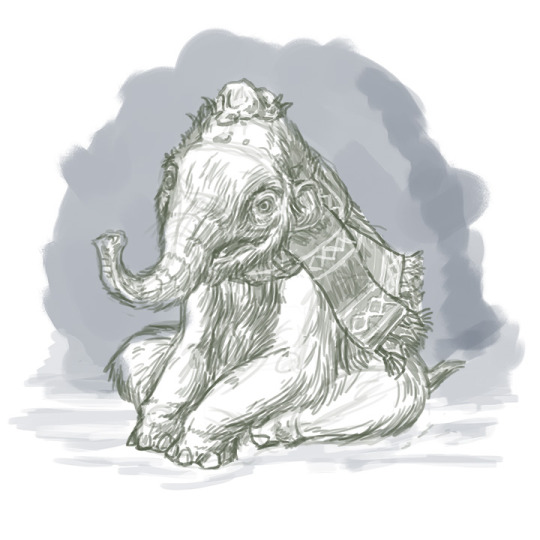
Work in progress for a quick seasonal image I am working on of a baby Woolly Mammoth (Mammuthus primigenius) playing in the snow.
#workinprogress#wip#seasonal#woollymammoth#mammoth#mammuthus#prehistoric#winter#scarf#holiday#playful#extinct#extinctmammals#prehistoricmammals#mammal#paleo#paleoart#paleontology#sciarc#science#funny#educational#naturalhistory#digitalart#digitalillustration#illustration#art#artist#illustrationart#maine
44 notes
·
View notes
Photo
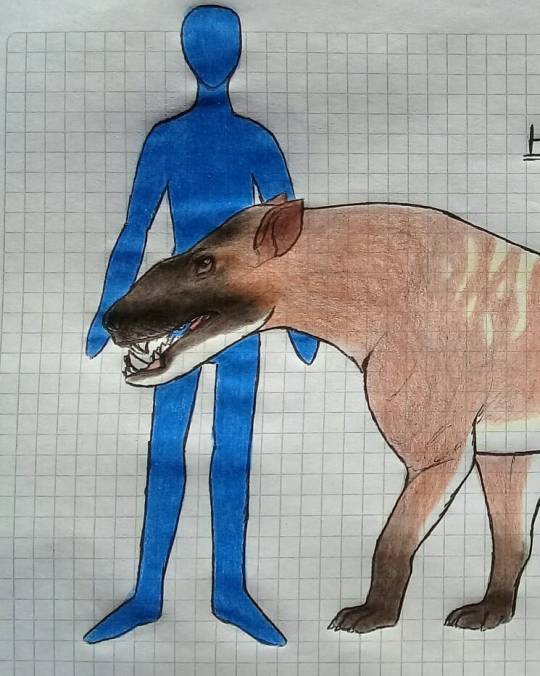
Probably more than one remember the famous BBC Documentary called Walking Among the Beasts, in episode 3 called Land of Giants the Hyeanodons appear, in the documentary they are not assigned a species. But it is said that these were the size of a modern rhinos, so I drew it with the maximum size of a Hyaenodon Gigas, which is the largest known Hyaenodon species. #hyaenodon #hyaenodongigas #bbc #walkingwithbeasts #landofgiants #creodont #hyaenodontidae #prehistoricmammals https://www.instagram.com/p/B8MFRRwFAQV/?igshid=mavuskvzaw96
#hyaenodon#hyaenodongigas#bbc#walkingwithbeasts#landofgiants#creodont#hyaenodontidae#prehistoricmammals
2 notes
·
View notes
Video
New species of Entelodont. Robbolodont found wandering around the yard today. #prehistoric #prehistoricmammals #dinosaur #entelodont #taxidermy #walkingwithbeasts #bbc #cgi @robbohudson (at Animatronic Animals ltd)
2 notes
·
View notes
Photo

Based this off of Prehistoric Park’s Mammoth. RIP Martha’s sister. qnq
Genetic Evaluator: https://evosaur.com/dinodemo
#Prehistoric#PrehistoricPark#Mammal#Extinct#ExtinctMammal#PrehistoricMammal#Mammoth#WoolyMammoth#GeneticEvaluator#Evosaur
0 notes
Photo
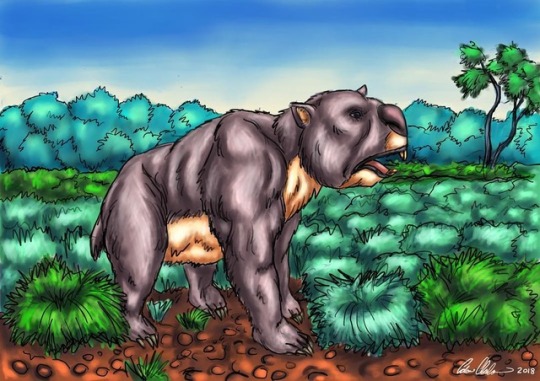
Diprotodon. The largest marsupial to ever walk the earth.#digitalartwork #digitalpainting #diprotodon #australia #australianmegafauna #prehistoricmammals #prehistoriclife #giantmarsupial #ipadproart #ipadpro #applepencilart #procreateapp #procreateart #prehistoricaustralia #finishedart
#digitalpainting#ipadpro#applepencilart#procreateart#prehistoriclife#finishedart#australianmegafauna#australia#prehistoricmammals#giantmarsupial#prehistoricaustralia#diprotodon#digitalartwork#procreateapp#ipadproart
0 notes
Photo
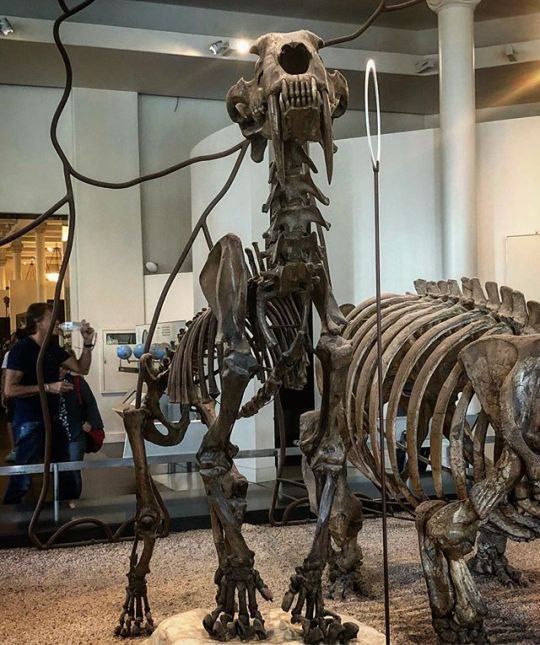
Smilodon #prehistoricmammals / on Instagram https://ift.tt/2Ehwpj9
0 notes
Photo

A fossil we don't find I'm California is Megaloceros. A genus of extinct deer with impressive palmate antlers. These giants roamed Eurasia from Ireland to Siberia during the Pleistocine. We had our own giant deer in North America, the Stag Moose. Maybe we can do one in the future! Designed by @onioncakes #megaloceros #megalocerosgiganteus #deer #pleistocene #iceage #giantdeer #prehistoricmammals #prehistoric #ancientmammals #enamelpins #pincollector #softenamel #coloredmetal #ungulate #elk #candy #pincollection #onioncakespins (at Scribbles Art Collective) https://www.instagram.com/p/Cjv5eQlvUUI/?igshid=NGJjMDIxMWI=
#megaloceros#megalocerosgiganteus#deer#pleistocene#iceage#giantdeer#prehistoricmammals#prehistoric#ancientmammals#enamelpins#pincollector#softenamel#coloredmetal#ungulate#elk#candy#pincollection#onioncakespins
1 note
·
View note
Photo
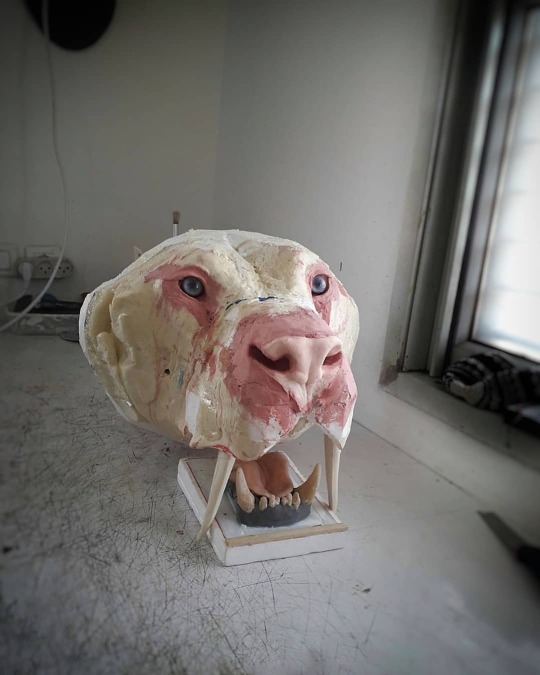
Still haven't found the time to finish this guy. Should it be fierce or stealthy? Growling or silent? Any suggestions? #sabertoothtiger . . . . . . . . . . . . #sabertooth #smilodon #fauxtaxidermy #replicataxidermy #animalsculpture #animalreplicas #naturalhistory #headmount #headtrophy #artwork #reproduction #handmade #animalart #extinct #prehistoricmammals #prehistoric #sabertoothedtiger #taxidermy #bigcats https://www.instagram.com/p/CQwUgKiJdD_/?utm_medium=tumblr
#sabertoothtiger#sabertooth#smilodon#fauxtaxidermy#replicataxidermy#animalsculpture#animalreplicas#naturalhistory#headmount#headtrophy#artwork#reproduction#handmade#animalart#extinct#prehistoricmammals#prehistoric#sabertoothedtiger#taxidermy#bigcats
8 notes
·
View notes
Photo
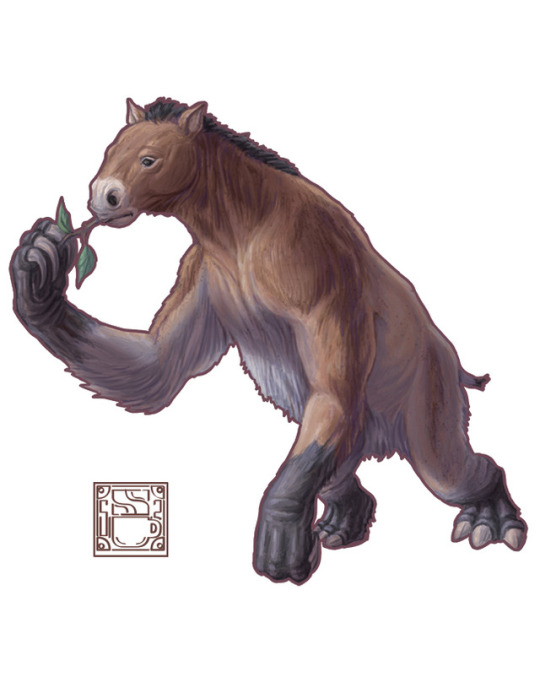
Final for Chalicotherium goldfussi. Discovered in the Grand Duchy of Hesse, in Germany and describied by German Naturalist Johann Jakob Kaup in 1833 from remains including a set of pebble-like teeth. Kaub used this distinctive feature as inspiration for the creature's name, which means "pebble" or "gravel" "beast." Over the years following that initial discovery more bones were found, mostly in Europe, including limb bones that showed off the creatures bizarre body plan.
C. goldfussi lived from roughly 28.4 to 3.6 million years ago, from the late Oligocene to the Early Pliocene, it stood between 6 to 9 feet high with and weighed in at a maximum of just over 2000 pounds. They likely fed on a diet of soft plant matter, using their large claws and long forelimbs to pull branches down towards their mouth while sitting on their stocky lower haunches.
Though they look like a combination of a horse, great ape, and giant ground sloth they are in fact members of the Perissodactyla order, also known as odd-toed ungulates, which includes rhinos, tapirs, and horse relatives.
It's likely they occupied a similar niche to that of some ground sloths, and even the therizinosaur group of dinosaurs, resulting in similar adaptations.
#chalicotherium#mammal#prehistoricmammals#prehistoric#chalicotheriidae#oligocene#pliocene#paleo#paleontology#paleoart#sciart#science#educational#naturalhistory#extinction#extinctanimals#digitalart#digitalillustration#illustration#illustrations#illustrationart#art#artists#painting#paintings#drawing#drawings#animals#maine#maineart
65 notes
·
View notes
Photo
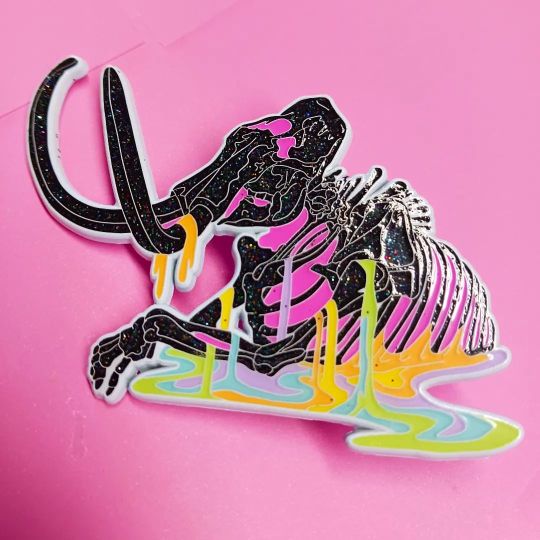
It was National Fossil Day yesterday, but we're always big fans of fossils here. This candy colored spooky tarpit pin shows a Columbian Mammoth. If you head to Los Angeles you can see what remains of these incredible animals at @nhmla and @thelabreatarpits and maybe wear this lovely piece of art while you look into California's past! Pin design by @onioncakes #tarpit #columbianmammoth #Mammoth #mastodon #californiatarpits #labreatarpits #lapelpin #artyouwear #prehistoric #prehistoricmammals #candy #neoncolors #synthwaveaesthetic #tusker #californiaprehistory #enamel #hardenamelpin (at Scribbles Art Collective) https://www.instagram.com/p/CjtB2eyJKBu/?igshid=NGJjMDIxMWI=
#tarpit#columbianmammoth#mammoth#mastodon#californiatarpits#labreatarpits#lapelpin#artyouwear#prehistoric#prehistoricmammals#candy#neoncolors#synthwaveaesthetic#tusker#californiaprehistory#enamel#hardenamelpin
1 note
·
View note
Photo
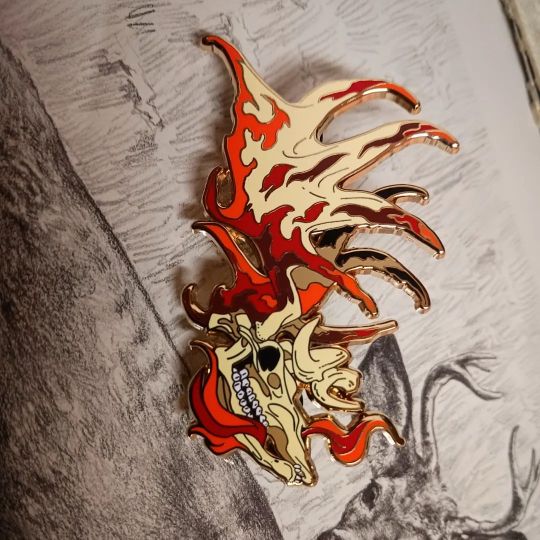
Megaloceros, something called the Irish Elk, wasn't an elk at all, but a whole genus of extinct deer. There are 6 species of this giant extinct deer! The one depicted in this pin is likely M. Giganteus or M. antecedens. It's closest living relative is believed to be the fallow deer, but sadly they're still rather distant and there's nothing quite like this amazing genus alive today. We have this enamel pin in multiple colors and in glow. This lovely wearable piece of art was designed by our own @onioncakes #megaloceros #megalocerosgiganteus #irishelk #iceage #pleistocene #dama #cervid #deer #enamelpin #art #cervidae #skull #vultureculture #skeleton #prehistoric #antlers #nature #naturalhistory #elk #prehistoricmammal (at Historic Apple Valley Inn) https://www.instagram.com/p/CgxbRTDPfuU/?igshid=NGJjMDIxMWI=
#megaloceros#megalocerosgiganteus#irishelk#iceage#pleistocene#dama#cervid#deer#enamelpin#art#cervidae#skull#vultureculture#skeleton#prehistoric#antlers#nature#naturalhistory#elk#prehistoricmammal
6 notes
·
View notes
Photo
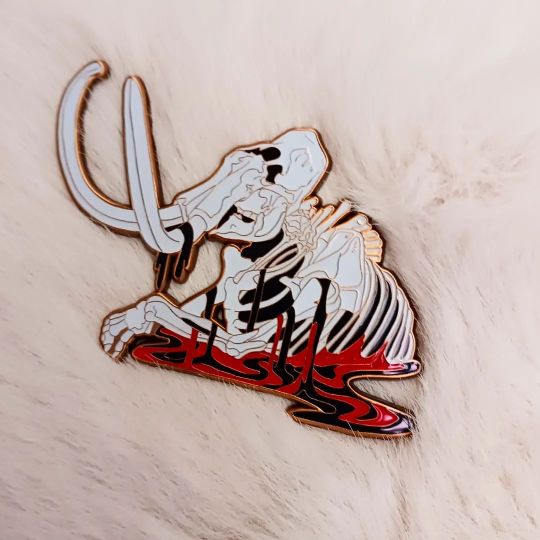
One of California's most famous extinct residents. You can call one of these your own. Many people have been lucky enough to see the giant bones pulled from the La Brea Tar Pits or the statues outside the Page Museum. The Columbian Mammoth was one of the largest species of elephant to walk the Earth. 13 feet at the withers and weighing 10 tons with the most impressive tusks, it would have been a sight to behold. Art by @onioncakes #mammoth #columbianmammoth #mcolumbi #labrea #labreatarpits #pagemuseum #prehistoricmammal #paleoart #elephant #pilocene #pleistocene #woolymammoth #tarpits #fossils #bones #vultureculture #bonecollector #extinct #mammals https://www.instagram.com/p/ChsycKSPgeG/?igshid=NGJjMDIxMWI=
#mammoth#columbianmammoth#mcolumbi#labrea#labreatarpits#pagemuseum#prehistoricmammal#paleoart#elephant#pilocene#pleistocene#woolymammoth#tarpits#fossils#bones#vultureculture#bonecollector#extinct#mammals
5 notes
·
View notes
Photo
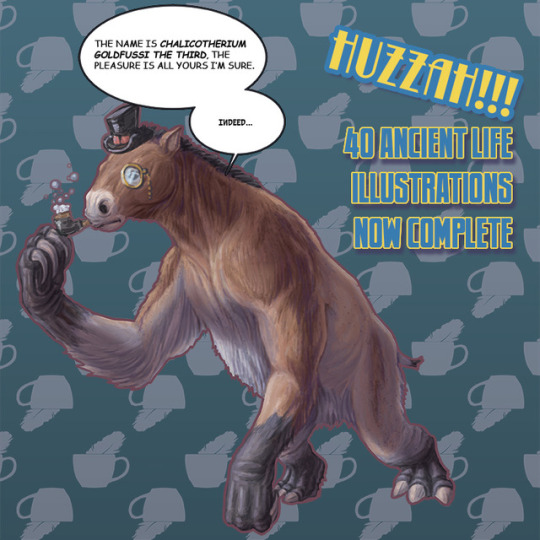
As of Chalicotherium goldfussi, I have completed 40 illustrations in my Ancient Life series! A positively upper crust achievement, I am now working to collect this first 40 illustrations into an art book which will hopefully be ready for a Kickstarter later this year.
I also just reached more than 1,700 followers here on Tumblr!
#chalicotherium#prehistoric#prehistoricmammals#mammal#paleo#paleontology#paleoart#sciart#kickstarter#art#artist#illustration#illustrations#illustrator#illustrationart#science#artbook#naturalhistory#crowdfunding#digitalart#digitalillustration#artistsontumblr#ancient#ancientlife
27 notes
·
View notes
Photo

Work in progress underpainting for Thylacoleo carnifex, also known as a marsupial lion. This pouched predator roamed Australia around 1.6 million years to around 46,000 years ago.
Thylacoleo is a member of the phylogenetic order Diprotodontia, which includes other Australian marsupials like kangaroos, wallabies, possums, and wombats (it's closest modern relatives). It was the largest known mammalian predator known to live on the continent, ranging in size from around 4.5 to 5 feet in length and around 2.5 feet high at the shoulder, weighing around 287 to a possible 353 pounds at adulthood.
T. carnifex had a set of truly impressive jaws with relatively huge teeth on either cheek that worked like bolt cutters to break up flesh and bones. It had remarkably strong forelimbs that it used to grapple prey, it's claws were adapted for taking down prey and climbing trees, the thumb-like first fingers on each front paw had enlarged claws.
Their population appears to have began it's decline close to the time when humans first came to the continent and coincides with a decline in many of the other large, now extinct, fauna that lived during the same time.
#workinprogress#thylacoleo#australia#marsupial lion#marsupial#notadinosaur#prehistoricmammals#paleo#paleontology#paleoart#sciart#science#educational#naturalhistory#extinction#extinctanimals#digitalart#digitalillustration#illustration#painting#art#drawing#maine#maineart#newengland#artistsontumblr
40 notes
·
View notes